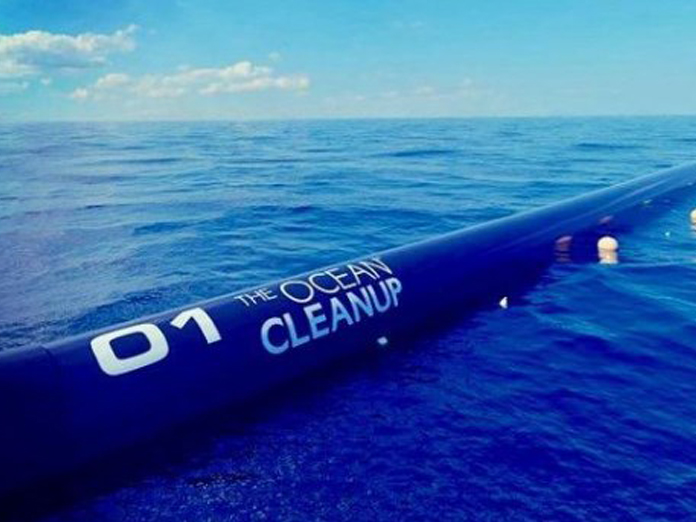Live
- Airport at Mandasa sparks protests
- KIIT-DU bags 4th rank in THE 2025 Science rankings
- YSRCP govt signed PPAs with SECI only: Kakani
- SIT speeds up probe in adulterated ghee case
- Cyber crime police refund Rs 3.59L to three cyber victims
- SAAP chairman rebukes Jagan’s comments on fee reimbursement
- Agri Minister Tummala: Bhadradri Kothagudem will be a model district
- Skilled workers urged to avail of PM Vishwakarma Yojana
- Ajit Pawar’s power play backs Fadnavis for CM post
- France's TotalEnergies halts new investment in Adani Group
Just In

Determined dreams have now turned into a reality as the Ocean Cleanup deploys its 20 million systems designed to clean up the 18 trillion pieces of trash floating in the Great Pacific Garbage Patch The Great Pacific Garbage Patch is a vortex of trash generated from an ocean gyre in the central North Pacific The trash vortex was discovered in the mid of 1980s and lies halfway between Hawaii and
Determined dreams have now turned into a reality as the Ocean Cleanup deploys its $20 million systems designed to clean up the 1.8 trillion pieces of trash floating in the Great Pacific Garbage Patch. The Great Pacific Garbage Patch is a vortex of trash generated from an ocean gyre in the central North Pacific. The trash vortex was discovered in the mid of 1980s and lies halfway between Hawaii and California.
On Saturday from San Francisco Bay, the floating boom system was deployed and will undergo several weeks of testing before being hauled into action. The system was designed by the nonprofit Ocean Cleanup, which was established in 2013 by 18-year-old Dutch inventor Boyan Slat. Their mission is to develop “advanced technologies to rid the world’s oceans of plastic.”
The floating boom system, with the help of dozens of more booms, is expected to clean up half of the Great Pacific Garbage Patch within the first five years. Each boom will trap up to 150,000 pounds of plastic per year as they drift along the currents between California and Hawaii.
The floating boom system, after going through testing, will be towed out 1,400 miles to the garbage patch around mid-October and begin collecting trash. The floating boom floats along with the local currents; it collects trash in the U shaped system, which has 10 feet of netting below it to collect smaller fragments of plastic. Once the boom is filled, a vessel will gather around the boom to collect the plastic and ship it to land for sorting and recycling.
The garbage patch is so huge that it is easily evident from space through satellites and covers around 1.6 million square kilometres and 1.8 trillion pieces of trash. The trash is collected and trapped within a circulating ocean current, called a gyre. This avoids the distribution of the garbage patch, an advantage while creating a system to collect the plastic.
The basic idea is that the 10 feet of netting might not be deep enough that fish can’t swim below it, expecting that the boom will collect only the trash and not fish. However, this is something that remains to be seen in the open ocean. Continued testing and deployment of additional boom systems will help further improve the systems to be more efficient and less disruptive to ocean ecosystems.
While the organization has motivated plans and the technology still remains unproven in the open ocean, they are contiguous to a solution to cleaning up the garbage patch in the ocean. No other company has a deployable system which can clean up the garbage patch on this scale.
The company is supported by some heavy hitters in the tech industry, including Peter Thiel, co-founder of PayPal and Marc Benioff, the chief executive of Salesforce.com

© 2024 Hyderabad Media House Limited/The Hans India. All rights reserved. Powered by hocalwire.com







